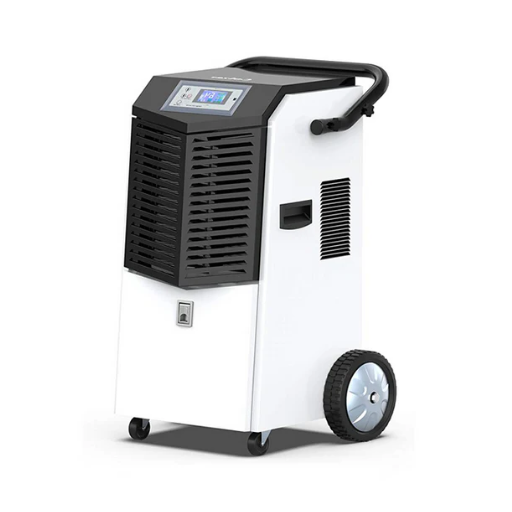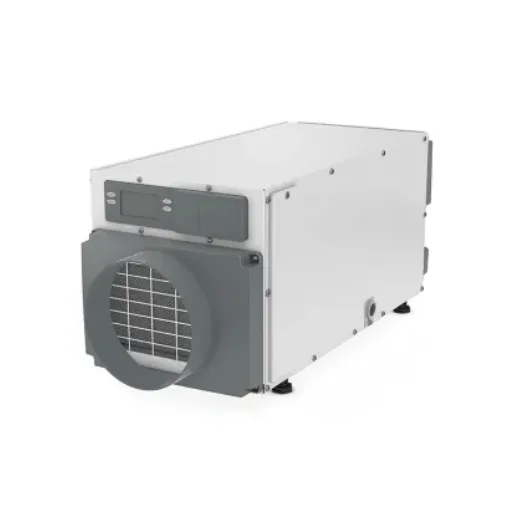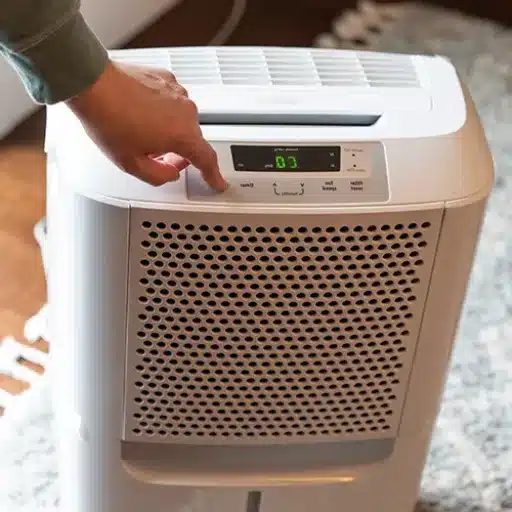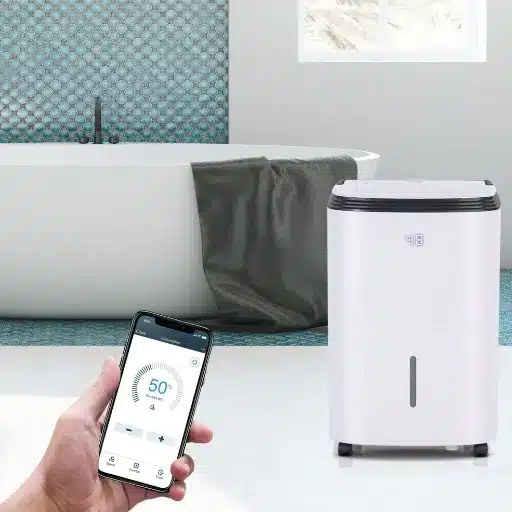Dehumidifiers play a critical role in maintaining optimal air quality and preventing moisture-related issues in various environments. However, not all dehumidifiers are created equal—residential and commercial models serve vastly different purposes and are designed with specific functionalities to meet unique demands. Whether you’re managing humidity levels in a home or tackling moisture challenges in a large industrial space, it’s essential to understand these differences to choose the right equipment for your needs. This article will provide a detailed analysis of how residential and commercial dehumidifiers differ in terms of capacity, design, application, and performance, enabling you to make an informed decision for your specific requirements.
What is a Dehumidifier?
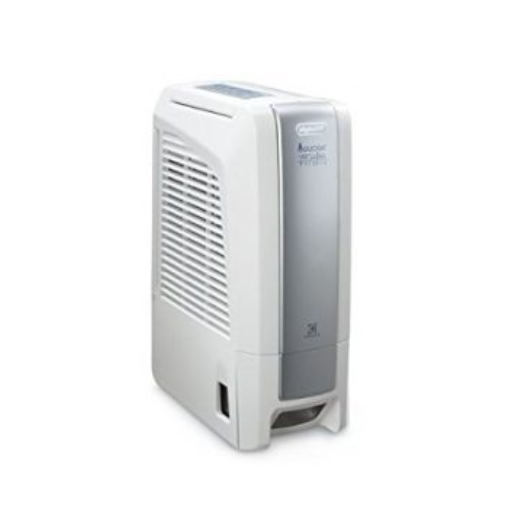
How Does a Dehumidifier Work?
A dehumidifier functions by reducing the moisture content of air in a given space to maintain relative humidity within defined optimal limits. The device takes in air from the surrounding environment, which is then cooled by a cooling coil. This cooling process drops the air’s temperature, resulting in water vapor condensing into water, which is either collected or drained off into a reservoir. Subsequently, the dry air is reheated and released back into the room.
Cooling and adsorption are the two basic types of dehumidifiers. Cooling or refrigerant dehumidifiers are the most commonly used and work best in warm, humid conditions. These units work by passing collected air over a cooling coil. Desiccant dehumidifiers, however, are more effective in low temperatures. These are equipped with a material that absorbs moisture directly from the air. The choice of dehumidifier type depends on the temperature and humidity conditions of the designated area.
A dehumidifier’s performance and efficiency are gauged in terms of the capacity stated in the number of pints of water removed in a day. Larger units are designed to accommodate bigger spaces or more severe moisture problems, while smaller units are more suited for compact or moderately humid settings. Proper selection, placement, and maintenance of a dehumidifier guarantees it functions optimally and enhances indoor air quality for a healthier and more comfortable climate.
Why is Humidity Control Important in Residential Settings?
Why does regulating humidity at home matter? First, it has an impact on health. Too much humidity can create respiratory problems like allergies and asthma because of the dust mites and mold present in the house. Homes should have a relative humidity range of 30%-50% to improve health and indoor air quality.
Besides health, controlling humidity also contributes greatly to comfort. During the summer, warm air can be uncomfortable to deal with, so folks appreciate when the temperature is lower than average, but they do not enjoy it when humidity is higher than what’s considered pleasant. Likewise, overly dry conditions can be problematic too because they aggravate respiratory issues and skin irritation. By controlling humidity, people are able to enjoy comfortable living conditions year-round.
Home and personal belongings can incur damage due to imbalanced humidity levels. Leaving wood exposed to high amounts of humidity will cause it to warp, in turn causing the paint to peel, the insulation will be destroyed, and the life of the household structure will suffer greatly. Likewise, having low humidity can crack wooden furniture. Homeowners can customize their air to breathe by managing humidity, which will turn out to make their infrastructure more durable and temporarily save them from costly repairs and replacements.
Applications of Dehumidifiers in Commercial Settings
The functions of dehumidifiers are crucial in various commercial industries. One important function is in warehousing and storage, where high moisture content can severely damage stored goods like papers, electronics, textiles, and food products. These products can be spoiled as a consequence of harboring mold, corrosion, and spoilage. These devices protect stored goods by maintaining the appropriate humidity levels, which greatly contributes to the longevity and safety of the goods.
One of the other crucial roles of dehumidifiers is in manufacturing industries. Sensitive industries such as pharmaceuticals, electronics, and food have very strict safety guidelines to meet. For the quality of the products produced, these industries necessitate high humidity control. In the case of food production and pharmaceutical production, low humidity levels are very critical in preventing degradation of the active components of the products. Static-sensitive parts in electronics manufacturing require high levels of humidity control to reduce the chances of static discharge and corrosion.
In addition, dehumidifiers are very helpful in commercial spaces where good air quality and comfort are prioritized, including office buildings, restaurants, hotels, and even gyms. By controlling humidity levels, these devices improve the overall air quality and reduce bad smells associated with stale air. This benefits the comfort of customers and employees while improving the structural condition of the business building, reducing damage from moisture, and decreasing pest infiltrations that tend to flourish in humid environments.
Key Differences Between Residential and Commercial Dehumidifiers
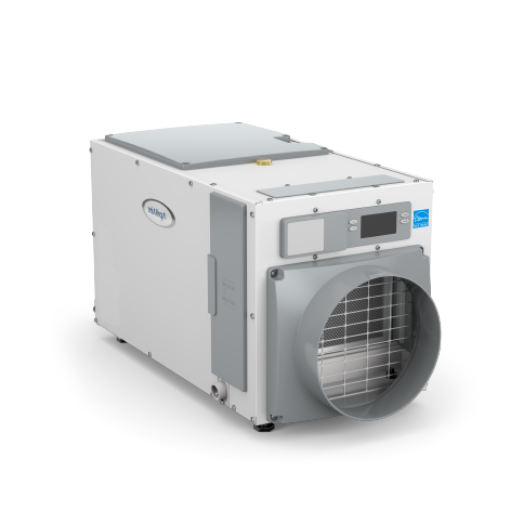
Design and Features: How Commercial Dehumidifiers Are Designed
Commercial dehumidifiers are built with strong and tough materials to endure demanding places like warehouses, industrial plants, and big public venues. Unlike other residential models, these devices are meant for high-volume moisture removal, often exceeding the extraction of several gallons of water a day. They are equipped with larger compressors, industrial-grade coils, and high-efficiency fans, which ensure speedy and dependable dehumidification of large areas.
Heavy-duty casings of corrosion-resistant stainless steel or impact-resistant plastic are other key features of these commercial dehumidificators. Most units are designed with advanced humidity sensors and programmable controls that offer automatic and precise demand-centric control of humidity levels. In addition to those, automatic drainage systems with condensate pumps circumvent the need for extra effort to remove water, enabling de էիюх to function unceasingly in moist environments.
Commercial units have a wider scope of operation due to their low temperature capabilities and operational defrost systems that keep coils free of ice in colder areas. Some high-end versions have smart features that allow for remote monitoring and management, letting facility managers check performance and calibrate settings in real-time through mobile applications or web browsers. These features, alongside great resilience, set commercial dehumidifiers apart as vital for achieving control in environmental management systems for industrial and business processes.
Size and Capacity: Residential Units vs. Commercial Spaces
When it comes to the difference between residential and commercial dehumidifiers, I would say their size, capacity, and intended use are where the differences lie the most. For example, until an entire home needs dehumidification, most residential units are portable in nature and are suitable for single rooms, apartments, or basements. These units perform their work with compactness, usually removing between 20 to 70 pints of moisture on a daily basis, which is considered adequate for residential units.
Other than that, industrial facilities, large commercial buildings, and warehouses with their business activities necessitate the use of commercial dehumidifiers designed for more demanding environments. These units might be overkill for smaller locations, but they come engineered with class-leading features, often exceeding 150 pints of moisture removal per day. Their fortifiable designs usually include more durable materials, higher airflow rates, and features like built-in condensate pumps and heavy-duty wheels, all designed for enhanced mobility.
Regardless of these differences, the core principles remain the same. Defining the operational goals alongside moisture removal requirements enables a balance to be formed, smoothing out any issues revolving around size or dehumidifier model. Recognizing the gap, these varying solutions provide a simplified selection process best suited to a user’s specific needs.
Cost and Efficiency: Evaluating Industrial Dehumidifier Needs
Industrial dehumidifiers are necessary for the management of humidity in large environments, but their cost-effectiveness and efficiency need to be evaluated from the perspective of operational requirements and the energy they consume. The initial investment in high-grade industrial units is often more expensive because these model types are designed for robust construction, long operation cycles, and high moisture extraction rates. However, newer models’ modern features, such as adjustable humidistats, smart sensors, and energy-saving compressors, allow for long-term cost savings through minimized energy expenditures.
In the case of purchasing industrial dehumidifiers, the evaluation of the cost-benefit ratio is done by analyzing the operating expense and performance benchmarks, in this case, the liters of humidity extracted per kilowatt-hour consumed, and for some systems, battery reserve. Savings in energy contribute to reduced operating expenses, but more importantly, support sustainability initiatives. Furthermore, the total cost of ownership calculations need to include regular maintenance and servicing works as well as filter changes to mitigate performance degradation and avoid unplanned expenses.
Business operations are increasingly driven by industry-specific requirements, including efficiency considerations. For instance, warehouses that store sensitive goods such as electronics or paper need high humidity control, avoiding damage, which warrants the employment of sophisticated models with superior regulation mechanisms. On the other extreme, in less critical environments, standard industrial units may suffice, offering a balanced compromise between impact and cost performance. Careful consideration of all these parameters guarantees the selected dehumidifier performs within the intended scope while also achieving the desired cost effectiveness.
When to Use a Commercial Dehumidifier
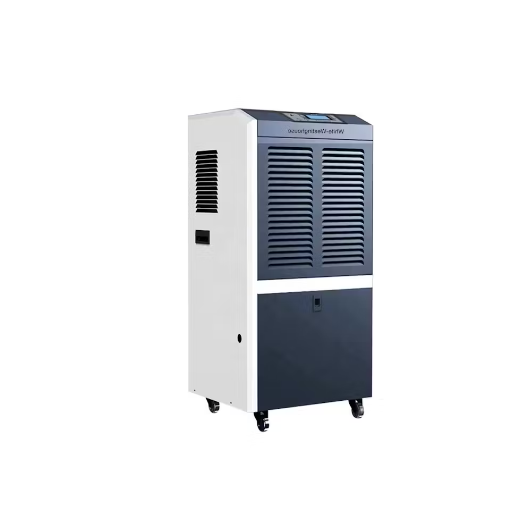
Understanding Humidity Levels in Commercial Buildings
Tailored monitoring approaches that utilize advanced sensors facilitate tracking fluctuations of indoor relative humidity levels, in turn maintaining operational efficiency and tenant satisfaction while protecting building integrity. With an optimal range between 30 to 50 percent, indoor air can cause discomfort and material damage at both extremes. Blocked mold spores will start forming colonies if the relative humidity exceeds 50%. With the help of monitoring devices, facility managers are able to capture real-time humidity changes.
Specific strands of industry have unique methods of conducting operations, resulting in different demands for the range and control of humidity. For example, data servers need to keep the moisture level at around 45% to prevent corrosion and static electricity issues. Organic and pharmaceutical warehouses set their threshold according to industry standards to avoid product spoilage, making strict control of humidity essential.
Easily programmable dehumidifiers that utilize advanced automation techniques, though tailored to specific needs, aid in restoring energy levels while maintaining compliance and asset security.
Benefits of Moisture Control in Warehouse and Industrial Settings
- Equipment Damage and Corrosion Prevention
Oxidation related to excessive moisture can cause corrosion to metal equipment, structural elements, and storage racks. Studies show that keeping relative humidity under 50% greatly mitigates the risks of rust formation, enhancing equipment longevity and functionality.
- Prevention of Product Spoilage
Relaxation of control for perishables, pharmaceuticals, and sensitive spherical electronic components can lead to microbial growth, chemical degradation, or condensation-inflicted damage, making humidity control critical. For instance, pharmaceutical storage facilities keep relative humidity within 35%-45% to meet set regulations while ensuring product integrity.
- Cost Savings and Energy Efficiency
Facilities could optimize energy use by employing programmable dehumidification systems. Such systems automatically reprogram themselves to environmental change, avoiding needless energy expenditure. Such accurate control can lead to operational cost reduction by approximately 20-30% as noted in energy audits conducted by industry.
- Risk Reduction of Static Electricity
Low and fluctuating humidity levels can increase the risk of static electricity build-up, which is particularly hazardous in environments dealing with flammable materials and sensitive electronic devices. These risks can be alleviated by maintaining humidity thresholds where relative humidity lies between 40%-60%.
- Enhancement in Comfort and Efficiency for the Workers
High humidity levels create discomfort, lowering the employees’ productivity and efficiency. A more comfortable working environment frees the employees from excessive fatigue and improves their well-being and morale. Hence, maintaining optimized humidity levels, usually between 40% to 50%, provides comfort to humans.
Facilities are able to preserve their assets and employees’ productivity by ensuring operational effectiveness alongside moisture control standards, thus complying with controlled humidity regulations.
Selecting the Right Dehumidifier for Your Needs
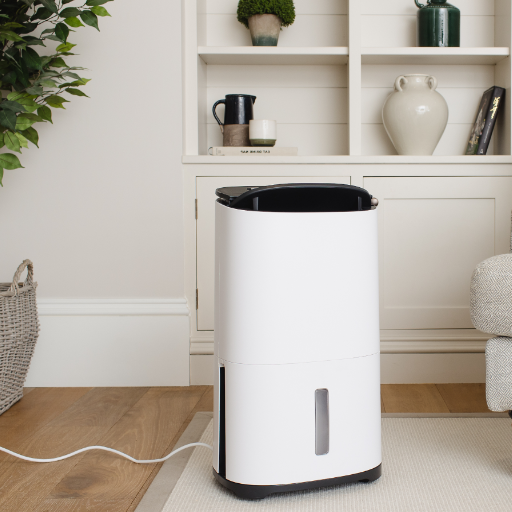
Essential Features for Heavy-Duty Commercial Dehumidifiers
Commercial-grade dehumidifiers for buildings, warehouses, and industrial facilities have tremendous capabilities for controlling moisture levels. When selecting one of them, consider features that ensure efficiency and reliability in tough environments.
- High Extraction Capacity: Businesses installing commercial dehumidifiers expect unrivaled performance, particularly in moisture extraction, usually quantified in pints/liters daily. For wider applications, units with over 70 pints (33 liters) are suitable, while some industrial-grade models claim to exceed 200 pints (95 liters) a day.
- Robust Build Quality: For heavy-duty models, warranty and long-term reliability matter the most. Check for appliances made of steel or industrial-grade polymers that will not corrode. These enable the machine to survive hazardous conditions like construction sites and factories where rampant wear and tear.
- Energy Efficiency: With the extended run times associated with commercial dehumidifiers, energy efficiency is imperative. Check the unit’s energy factor (EF) rating, which captures the volume of water removed per kilowatt hour of energy consumed (liters/kWh). Higher ratings imply efficient units, helping lower operational expenditure.
- Continuous Drainage Options: Most commercial dehumidifiers are fitted with a continuous drainage system to sharpen functions and lower maintenance tasks. Integrated pump systems or gravity-fed drain outlets enable automatic moisture removal, thus rendering manual tank-emptying unnecessary.
- Operative Range and Climate Tolerance: Heavy-duty dehumidifiers perform over a wide temperature and humidity range. Operating at low temperatures, ensured by automatic defrost systems, allows the unit to work in some colder regions, typically down to 1°C (33°F).
- Intelligent Controls: In the case of sophisticated, larger spaces, modern electronics are required. Optimizing air quality while reducing energy consumption can be achieved with precise humidity regulation made possible through programmable humidistats, digital displays, and fan cycles that automate.
- Mobility and Portability: Commercial units are larger, thus creating the need for mobility aids. Multi-site operations are streamlined by the time and labor savings achieved through the portable designs of equipped handles and caster wheels, and compact configurations.
- Compliance with Safety Standards: The dehumidifier should abide by industry safety certifications in CE, UL, and ETL. Such measures ensure that the unit is deemed safe for enduring industrial use and conforms to laws governing electric appliances.
Commercial dehumidifiers can be selected as per user specifications, considering efficiency and a healthier environment by focusing on these dehumidifying features. This selection is useful to facility managers and business owners on a large scale.
Maintenance Tips for Residential and Commercial Dehumidifiers
To keep reading and commercial dehumidifiers in good operating condition, a well-planned maintenance schedule must be followed. Regular maintenance helps to ensure reliable functionality and significantly minimizes malfunctions that could stem from ignorance.
- Regular Filter Cleaning or Replacement: Both residential and commercial units depend on filters to capture particulates. The filters need to be checked at least every 2 to 4 weeks and cleaned or replaced as dictated by the manufacturer’s directions and world usage. Reduced air flow due to active filter clogging greatly diminishes the dehumidifier’s efficiency as well as energy savings.
- Clean and Monitor the Coils: Dust and dirt without constant upkeep can build up on both the evaporator as well as the condenser coils and alter their heat exchange rate. Regular maintenance is a must for the coils so that proper humidity control can be maintained. In a commercial setting, having a professional attend to extensive coil cleaning periodically may be a good idea.
- Drain and Disinfect Water Collection Reservoir: For models without an optional continuous drainage system, the water tank or the internal reservoir needs to be emptied regularly to prevent overflowing and bacterial contamination. Moreover, to prevent mold and microbial growth, sanitization of the reservoir is recommended at least once a month with an approved bleach disinfectant solution.
- Inspect and Test Drainage Functionality: In case of a cross equipped with a continuous system, verify that the drain hose is not kinked or blocked and is properly secured to prevent leaks. Inspect the hose for signs of wear or cracks and replace it in a timely manner to facilitate uninterrupted removal of water.
- Check the Humidity Sensors and Control Panels: Integrating advanced sensors and digital control panels for accurate humidity settings, both residential and commercial dehumidifiers feature modern-grade components. These may become out of calibration, especially in high-traffic areas, due to over-troubleshooting. Calibration issues necessitate the user manual or contacting the manufacturer for their specialized guidance.
- Maintain Adequate Clearance Between Air Around The Unit: Ensure the device is set at a distance from walls or any other items to allow proper circulation of air. Specifically, commercial dehumidifiers set in tight industrial spaces should be checked on a regular basis for unobstructed induction and extraction vent access.
- Set Up Your Yearly Professional Maintenance: For larger commercial units, an annual inspection by a certified technician tackles more technical problems and ensures the unit is operating at peak performance. This professional servicing can encompass, but is not limited to, advanced cleaning and component changeouts as well as functionality enhancement.
Following these guidelines will help users ensure their dehumidifiers run with consistent reliability and prolonged life while achieving consistent humidity control across residential and commercial buildings.
The Role of Commercial Dehumidifiers in Maintaining Optimal Conditions
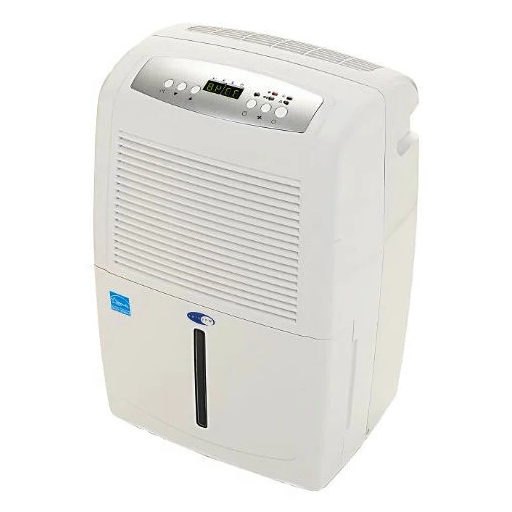
Creating Optimal Conditions in a Commercial Environment
The use of commercial dehumidifiers in industry is important for ensuring precise environmental conditions. Inappropriate levels of humidity can cause significant damage to the structure, equipment, or products, particularly sensitive ones within commercial spaces. In manufacturing facilities, excessive moisture may cause machinery rust, which decreases operational efficiency. Storage facilities face critical issues too by increasing the risk of mold growth and spoilage of sensitive goods such as food products and pharmaceuticals.
Advanced control technology solves many issues that regulate business moisture levels. Nowadays, commercial dehumidifiers come equipped with high-capacity moisture removal, monitoring systems, and even energy efficiency. Due to such features, relative humidity is maintained as required. The recommended instruction for any given facility is that the internal relative humidity should be set to lie anywhere between 30% and 50%. At these levels, the material safety is ensured, along with comfort for maintenance staff.
More often than not, modern units are equipped with smart controls enabling them to be adjusted in real time, based on changes in the environment. Such functions become essential for centers like data centers, where marginal changes in humidity could cause electronics to malfunction, resulting in uncontrolled costs. When commercial enterprises employ these systems, they can effectively reduce the damage to infrastructure and sensitive products, thus increasing efficiency in the workplace.
Impact of Humidity Control on Larger Spaces
Humidity control for larger spaces is significant in environmental conservation, material preservation, and operational performance. Other large spaces like warehouses, manufacturing facilities, and other public venues are often challenged because of their size, their varied use, and external conditions, which tend to change. Custom-defined limiters help maintain consistent environmental conditions by controlling moisture levels as well as balancing dry air. Here are five impacts of proper humidity management for larger spaces:
- Material Preservation: Humidity control is essential in preventing mold from growing, component corrosion, degradation, as well as being critical for sensitive items like paper, metal, and textiles. Also, low humidity levels can tend to dry certain materials like leather and wood.
- Energy Efficiency: Operational costs related to energy consumption are reduced thanks to humidity control systems. Cooling and heating are generated too much, making the use of the systems rely upon it, so using advanced control helps with the use of energy. Maintaining a certain optimal humidity level makes regulations indirect.
- Sustained Improved Equipment Longevity: Condensation in sensitive electronics or excessive rust formation from excessive humidity may cause permanent damage to equipment. Revenue and maintenance costs are reduced significantly while still managing humidity. Proper control in operational spans extends the lifetime of the machinery.
- Occupant Comfort and Health: The recommended relative humidity range of 40 to 60% supports the quality of air and respiratory comfort for building occupants, reducing the chances of allergies, respiratory complications, and the transmission of airborne diseases.
- Compliance with Industry Standards: Pharmaceuticals, food processing, and electronics industries often require strict control of humidity in their operations. For example, moisture-sensitive products in the pharmaceutical sector have exact storage requirements that must be followed to maintain efficacy and safety.
Proactively addressing these impacts illustrates the need for large-scale environments to have well-designed humidity control systems targeted to specific requirements.
Longevity and Durability of Commercial Dehumidifiers
The longevity and the quality of commercial dehumidifiers directly impact operational efficiency and cost considerations down to the industrial level. Commercial grade units are built to handle aside operations from manufacturing, also in modern data centers. It is very important to control humidity levels in devices used in business warehouses. Corrosion resistant materials, heavy-duty seals and alloys, reinforced gaskets and seals tend to be used in construction. They also use corrosion-resistant materials and powerful blockades to guard against damage due to exposure to moisture.
According to old studies, industrial-grade dehumidifiers need maintenance every 8- to 15-year mark. However, due to hardware advancements like III unit integrations, the demand for physical monitoring to perform maintenance tasks is greatly reduced. Assuring circulation of air beyond the system, replacing caps filters on routine intervals, as well as cleaning coils assists is greatly extends the lifespan. The requirement for repair greatly reduces the overall cost.
They also undergo integrated testing, guaranteeing they endure the physical stress and power surges typical of huge systems. For instance, units that function in very humid conditions employ fan motors that are thermally fatigued and powerful rotary compressors. Companies gain reliable commercial dehumidifiers and achieve optimal efficiency while spending less energy during sustained operations over time, enhancing operational performance and meeting environmental, product safety, and sustainability criteria.
References
-
Energy-Efficient Management of Mechanical Ventilation and Relative Humidity in Hot-Humid Climates – Research on energy-efficient dehumidification in hot and humid climates.
-
Residential Performance Code Methodology for Crediting Dehumidification and Smart Vent Applications Final Report – A report exploring rules for dehumidification in residential and commercial buildings.
-
Vent Right and Then? Mechanical Ventilation, Dehumidification and Energy Use in Humid Climates – A publication discussing mechanical ventilation and dehumidification in humid climates.
Frequently Asked Questions (FAQ)
Q: What are the main differences between residential and commercial dehumidifiers?
A: The primary differences lie in capacity, size, and application. Residential dehumidifiers are designed for residential use and are generally smaller, suitable for controlling moisture in homes. In contrast, commercial and industrial dehumidifiers have a higher capacity and are used in larger spaces such as warehouses and commercial establishments.
Q: Why is it important to choose the right dehumidifier for your space?
A: Selecting the right dehumidifier is crucial for effective moisture control. Using a dehumidifier that is unsuitable for your space, whether residential or commercial, can lead to inefficient moisture removal and potential damage to the environment or equipment.
Q: Are commercial dehumidifiers louder than residential ones?
A: Yes, commercial dehumidifiers typically have higher noise levels compared to their residential counterparts due to their larger size and higher capacity, which are necessary for removing moisture from the air in commercial spaces.
Q: Can a commercial dehumidifier be used in a residential setting?
A: While commercial dehumidifiers are not typically suitable for residential use due to their size and noise levels, they can be used in larger homes or areas with significant excess moisture issues, provided the noise and space considerations are managed.
Q: What capacity should I consider for a residential dehumidifier?
A: Residential dehumidifiers are generally smaller and suitable for spaces such as bedrooms, basements, or living rooms. The capacity you need depends on the size of the area and the level of moisture present. It’s important to select a model that can effectively handle the amount of moisture in your specific environment.
Q: How do commercial dehumidifiers handle excess moisture differently from residential ones?
A: Commercial dehumidifiers are designed to handle much larger volumes of air and moisture, making them effective for larger spaces with higher humidity levels. They often come with features tailored for commercial or industrial settings, such as enhanced durability and continuous operation capabilities.
Q: What are some typical applications for commercial dehumidifiers?
A: Commercial dehumidifiers are commonly used in environments that require effective moisture control, like warehouses, manufacturing plants, and other commercial establishments where excess moisture can lead to product damage or health issues.
Q: Are there energy efficiency differences between residential and commercial dehumidifiers?
A: Yes, residential dehumidifiers are typically more energy-efficient for small spaces, whereas commercial dehumidifiers, due to their higher capacity and continuous operation in larger areas, may consume more energy but are designed to effectively manage the air in commercial spaces.
Q: Can I use a residential dehumidifier in a small office?
A: A residential dehumidifier can be suitable for residential use in small office spaces, especially if the area is similar in size to a typical room in a home and does not experience high levels of humidity.
Q: What is the benefit of having a dehumidifier in commercial establishments?
A: Having a dehumidifier in commercial establishments helps maintain optimal humidity levels, preventing issues such as mold growth, material degradation, and health problems associated with excess moisture.

